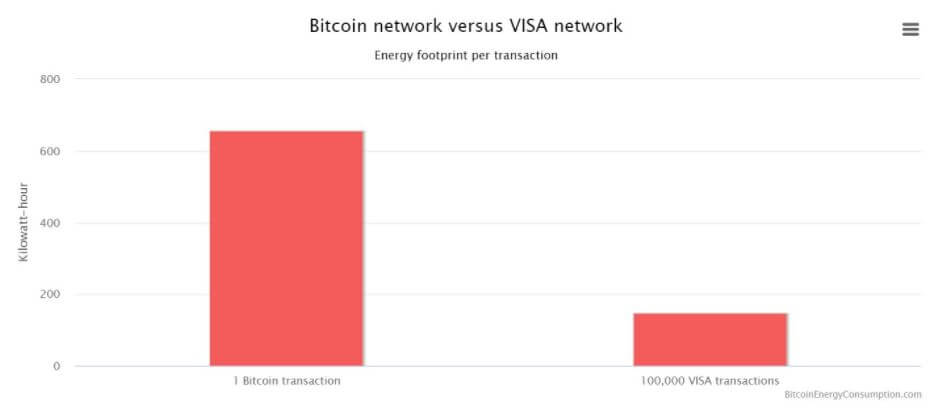Bitcoin is again hitting new record highs. Its value has increased more than 100-fold over the past five years, and with these highs has come ever greater social and cultural prominence.
Yet in spite of this growing awareness, Bitcoin’s environmental footprint is often overlooked. The energy intensiveness of even a simple transaction of bitcoin is absurdly high.
As you can see below, one bitcoin transaction uses more than three times the energy of 100,000 Visa transactions.

This is on top of the much noted energy wastage associated with bitcoin “mining,” which is a mathematical process entirely dependent upon computing power. Every new bitcoin requires more energy than the last, but with the expanding prices the mining continues apace.
Moreover, each bitcoin mining centre is working on developing “the same” next bitcoin, in a sense. Once a centre publicised a proven bitcoin, the other centres discard their progress and commence searching for the next one.
One study, based on data from September 2019, “conservatively estimated” bitcoin mining to use 87TW of electricity annually. This is about as much as medium-sized economies like Pakistan, Finland, Belgium, Chile or Colombia. The carbon footprint of bitcoin mining has been estimated at 37 megatonnes annually.
The study also found that half of all the world’s data centres are consumed by bitcoin mining.
How long can this pointless and wasteful activity go on? That really depends upon the price, and thus the incentive for the “miners.” Arguably, it’s also the result of the absence of an internationally recognised, neutral currency. In an era of massive, competitive state money-printing – led by the US as the issuer of the global reserve currency – it’s hard to imagine bitcoin going anywhere anytime soon.
If you appreciated this article, you can follow Christian on Twitter for more news updates and summaries.